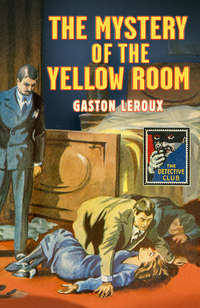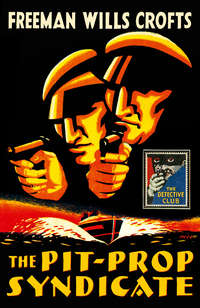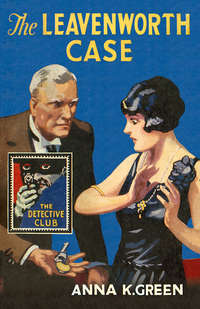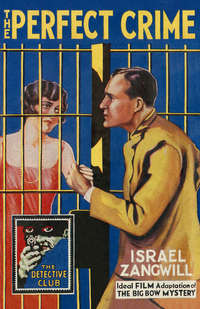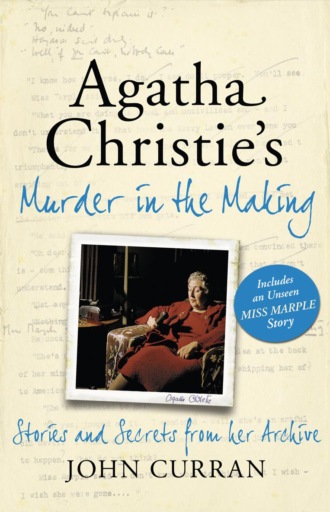
Полная версия
Agatha Christie’s Murder in the Making: Stories and Secrets from Her Archive - includes an unseen Miss Marple Story

Agatha Christie’s Murder in the Making

Stories and Secrets from her Archive
John Curran

Dedication
For
Mathew, Lucy and Mahler,
without whom …
Contents
Cover
Title Page
Dedication
Preface
Introduction
1 Rule of Three
2 The First Decade 1920–1929
Unused Ideas – One
3 Favourite Stories and ‘The Man Who Knew’
4 The Second Decade 1930–1939
Unused Ideas – Two
5 ‘How I Created Hercule Poirot’
6 The Third Decade 1940–1949
Unused Ideas – Three
7 Miss Marple and ‘The Case of the Caretaker’s Wife’
8 The Fourth Decade 1950–1959
Unused Ideas – Four
9 Agatha Christie and Poison
10 The Fifth Decade 1960–1969
Unused Ideas – Five
11 The Dark Lady …
12 The Sixth Decade 1970–1976
Unused Ideas – Six
13 Agatha Christie’s Booklists
Appendix 1: Agatha Christie Chronology
Appendix 2: Alphabetical List of Agatha Christie Titles
Index of Titles
Acknowledgements
Copyright
About the Publisher
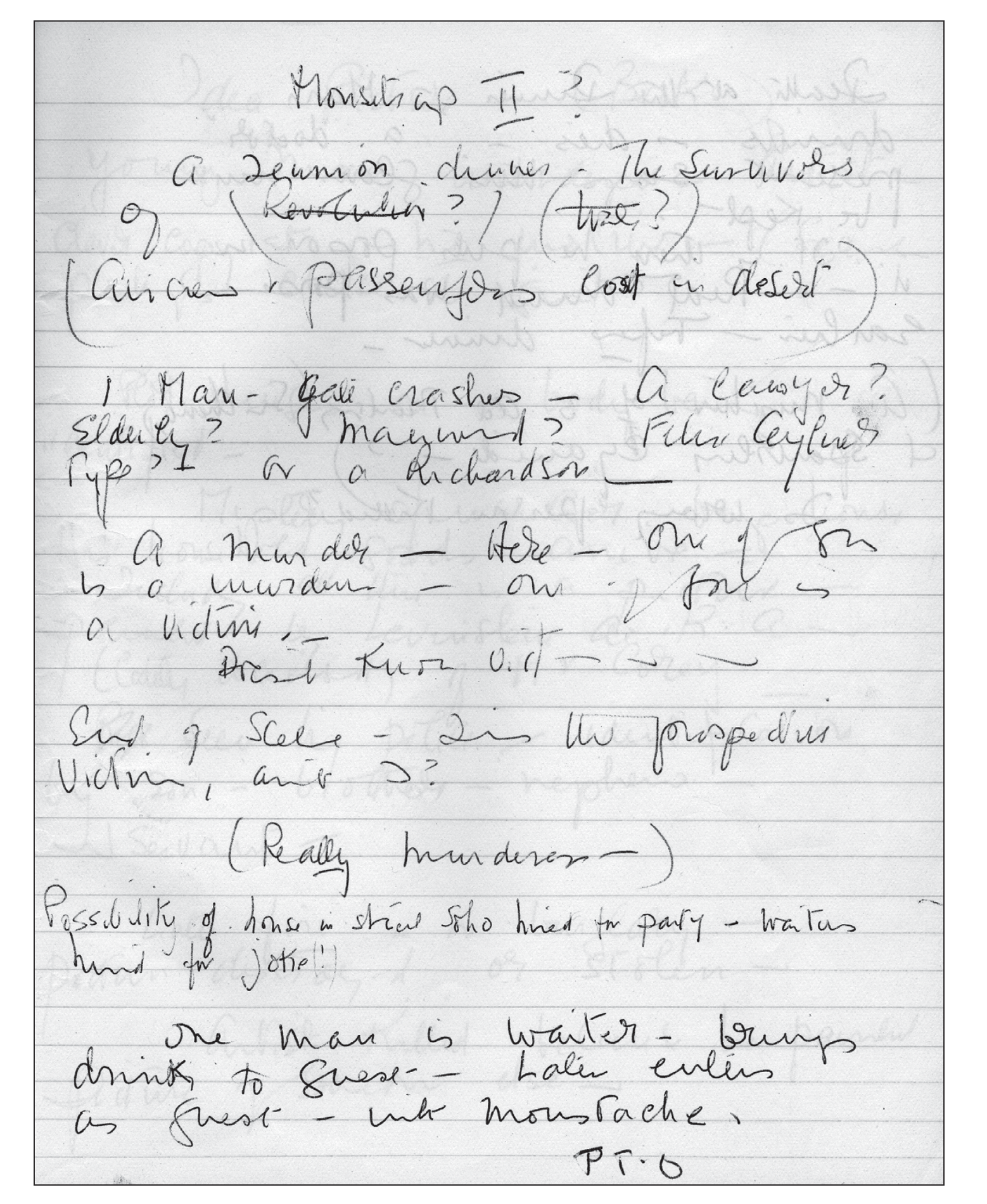
From Notebook 4 a tantalising glimpse of a project, never realised, from the 1960s. See Unused Ideas Three.
PREFACE

Victoria Station, March 1931
Although she is by now an experienced traveller, the sights, sounds and even smells of the great railway station never fail to excite her. This is the start of her journey and she takes a moment to savour the sense of anticipation that bustling railway stations have always engendered in her – harassed and luggage-laden passengers hurrying along platforms, imperious-looking porters issuing instructions and shouting to invisible colleagues, the great trains snorting and bellowing clouds of smoke. She walks purposefully along the continental platform and hails a porter. As soon as she is installed in her seat she has an opportunity to observe, at her leisure, her fellow passengers. She can’t help speculating about the life of these strangers with whom she is to share a few hours in close proximity. This covert observation has, by now, become almost an occupational hazard and provided she is left to her own devising it’s all potential material. Now let’s see …
The moth-eaten looking man sitting opposite … studying his railway timetable and jotting down the details as he turns the pages could be … an office worker planning his holiday? a Civil Servant checking a business trip? a salesman plotting his sales route? His only luggage is a smallish case … probably for his samples … too small for encyclopaedias … brushes, perhaps, or … pens or … hosiery?
And that very handsome young man opposite … reading … what, exactly? It’s not a book … or a magazine … it seems to be typed pages, loosely bound, printed on only one side of the page and laid out very specifically. And he is studying it intensely and underlining sections of it … a business report? A manuscript perhaps and he’s correcting it? No … the corrections seem too regular. Ah, I’ve got it – it’s a script and he’s marking his lines … he’s an actor and that makes sense … matinee-idol good looks.
The older, haughty-looking woman in the far corner … seems to be waiting for someone, as evidenced both by her exasperated demeanour and by the continual checking of her wristwatch and her scanning of the platform for … her husband? No … no wedding ring … a friend, maybe … a travelling companion?
A harassed-looking older woman, struggling with a fox terrier on a lead and carrying a suitcase, a handbag, an umbrella and an assortment of magazines, hurries along the platform. In response to an imperious gesture she clambers into the carriage, managing to drop the magazines as she does so. Any lingering doubt as to her status is removed by the recriminations which follow.
Yes, definitely a companion … almost certainly a paid companion … nobody else would accept that sort of abuse.
At last, to the accompaniment of final shouts and whistles, the train glides out of the station and passengers settle down for the journey. As London begins to disappear her thoughts turn to the reunion ahead of her in a few days. Although married six months ago she has not seen her husband for almost four of those months. And despite a constant flow of letters in both directions she is anxious that, when they finally meet again, there should be no awkwardness. She knows that the best remedy for worry is work and she can easily and unobtrusively do some here where she sits.
And goodness knows, there is no shortage of potential material; just look around this carriage … and I want to get down that idea about Ruth Draper … very clever performance … complete transformation in a few seconds … must take lots of practice and endless rehearsals … which also reminds me …
Reaching into her bag, she produces a small, black-covered notebook. She opens it, idly noting that Rosalind has already tried to appropriate it by the simple expedient of writing her name and address on the inside cover – ‘Rosalind Christie, Ashfield, Torquay, Devon’. A further search produces a fountain pen. Unscrewing the top of the pen, she opens the notebook, flattens the pages and begins to read what she has already written.
Ideas 1931
Book
Poirot and a crime
a closed circle – one of them did it – he knows which – but now …
Could Why Didn’t they ask Evans fit in?
Hmm … can’t really remember much about this ‘closed circle’ … and ‘Poirot and a crime’ is not much help … probably full of ideas at the beginning of the year. Evans, Evans … that rings a bell although I don’t think I settled on any particular idea … although haven’t I got an Evans in Sittaford?… Let’s see …
She turns the page and continues reading, noting the underlined qualification at the beginning.
Tentative
Old lady (or man) sends for P – in a state of coma when he arrives
Last words – Poirot is left to find out
Evans (maid)
Also Evans (gardener)
and Evans – a baker or butcher or tradesman …
Oh, yes, of course … the last words of someone who is dying and they make no sense … not even to me at the moment, I must admit … but distinct possibilities here … infinite ones, in fact. I could have a lot of fun with this. Should it be another case for Miss M? … it sounds village-y, and Miss M would know about maids and gardeners and tradesmen. Although I haven’t given Poirot an airing since … let’s see … Blue Train, I think … and that was at least three years ago. Yes, that was his last case … of course End House will remedy that next … what did Edmund tell me … next February I think … Anyway, didn’t I have a blood-covered butcher in one of those Big Four episodes … and a baker seems an unlikely possibility … a gardener, perhaps. But would it carry a book or should I use it as just an element of a plot … or a short story maybe … although it would look great as a title: ‘Why Didn’t They Ask Evans?’
She leaves ‘Evans’ for a moment, looks up and stares absent-mindedly at the passing countryside. Outside snow is still lying on many of the fields, a fleeting reminder of the snowbound setting of yet-to-be-published The Sittaford Mystery. She returns to her notebook and turns the page.
Yes, here we are … I knew I jotted down a note somewhere … this one I do remember …
Idea for book
Murder utterly motiveless
Because dead man and murderer
Unacquainted –
Reason – a rehearsal
I’m sure this is really original but it needs careful treatment. Let’s leave that for the moment … not sure where to go from there … tricky set-up but I think the idea is promising … worth thinking about it carefully …
She looks speculatively again at the final word of the note and then glances across at the good-looking man opposite, still ostensibly studying his script.
My good-looking friend is examining his reflection in the window … he knows the young girl opposite is watching him … seems to enjoy it … used to people watching him … matinee-idol good looks … matinee … actor … rehearsal. How about an actor for the murder-as-rehearsal idea? Seems to make sense … but victim or murderer? Mmm … possibilities here although I’m not sure of carrying off a theatre milieu. Maybe just an actor and his social circle …
She turns another page and looks reminiscently at what she has previously written.
Man stabbed in room – everyone there – behind screen – gagged first.
Man induced to hide in other man’s rooms (his wife coming there) has tea first (drugged)
Hmmm, yes, that one we all wrote … was it last year?… the body found behind the screen when the blood flowed out from beneath it … lots of people in the room. Blood on the Screen or Under the Screen or something … Trouble with those combined efforts … you have to remember that someone else is going to take over after you so you can’t do everything, or even anything, you want … Dorothy always wants it all very structured and organised … I can’t really work under those circumstances and I think I can do something else with that same basic idea …
Man hides in chest – (but bores hole to see through) has previously had a dinner with friend …
Must finish this off … Edmund is sure The Strand will take it … which would be nice … and I have most of it sketched here … just a matter of writing it up. But I want to get Ruth Draper down on paper.
She flicks through a few pages until she finds a blank one, unscrews the top of her pen, writes and firmly underlines:
Book
Man Killed – says Jane Wilkinson (actress) beautiful amoral – ‘Only way is for me to kill him’
Carlotta Adams – her imitations – (including Jane) ‘Would do anything for money’
Crime discovered – either victim says it was Jane – or man servant saw her – or girl secretary saw her
However, Jane has alibi – quite unbreakable – dinner
Carlotta Adams also dies – before Poirot can see her – a simple poison
Right, that’s my basic situation. Now I wonder if I could work in the ‘Evans’ dying words idea, if the victim says Jane’s name … and I could call one of the servants Evans … must be careful about Poirot not getting to see Carlotta before she dies … now, some more detail …
An actress Jane W comes to see Poirot – engaged to Duke of Merton
Martin Squire – pleasant hearty young fellow – an admirer of Miss Wilkinson’s – he is seen next evening having supper with Carlotta
Lord Mountcarlin
Other man (Duke? Millionaire?)
Bryan Martin actor in films with her
Lord Mountcarlin’s nephew Ronnie West (debonair Peter Wimseyish)
Miss Carroll Margaret Carroll middle-aged woman A Miss Clifford
Not convinced about some of those names but I can remedy that later … ‘Evans’ is still a possibility but I’m not sure in which capacity … and I need some more suspects … what about the old reliable, the butler? or maybe a maid of Carlotta’s? And I think I’d better have Japp, especially if I set it in London … which is the most likely possibility if I have theatres and actors and actresses and rehearsals … he could be the official investigator. Rehearsals … now, I wonder … should I combine Ruth Draper and the rehearsal idea … or are they each good enough to carry a book on their own? I think they are …
Japp comes to see Poirot – threats – P says quietly ‘Who heard them?’ – J hedges? But perfect alibi – party Amersham
She pauses briefly and considers what she has written, reflecting on possible opening scenes. Turning the page she continues covering the smaller-than-usual pages in flowing, black handwriting.
Now, the actual events from the beginning …
Sequence
At theatre – CA’s performance – H’s reflections. Is JW really such a good actress? Looks round – JW – her eyes sparkling with enthusiasm. Supper at Savoy – Jane at next table – CA there also …
Enter Bryan (and CA) JW has gone into bedroom …
Next JW herself – her account – the telephone call …
With Jenny Driver – called for her – 8.30 – and took her out for evening …
Immersed mentally in the West End of night clubs and theatres and hat shops and dinner parties, she fails to notice the train slowing down until it jerks to a stop and her pen stabs the page. Glancing up briefly, she notes the approach of the ticket collector and reaches into her handbag to retrieve her ticket. Anxious to return to Jane and Carlotta and Miss Carroll, she begins a new page.
She is relieved? or disappointed. P asks if he can see Miss Carroll …
Her pen falters and she shakes it impatiently; a large splash of black ink obliterates most of the page.
Oh, what a mess … how can I mop it up?… no, I’ll just tear it out completely and start again … luckily, it’s a new page and I won’t lose the back …
‘Tickets, please.’
Distracted, she tears the page from the notebook and produces her ticket, noting idly that the official has a button missing from his uniform.
‘Thank you, Ma’am.’
Now, where was I? … Poirot was about to question Jenny … no, Miss Carroll … and he was talking to … let me check …
She unfurls the discarded, blotted page and studies it.
he is relieved
… who is?… was he not talking to … Oh, I see what’s happened … I didn’t remove it completely … there’s still some of the first word left in the notebook … makes quite a difference … now, I wonder …
She stares out the carriage window but instead of snow-covered countryside she sees Poirot, clutching a letter with a torn edge, gesticulating and explaining excitedly to Hastings, who merely looks bewildered, completely missing the vital point. She picks up her pen once more and while the idea is fresh in her mind dashes down her inspiration – an inspiration that will hang the murderer of Lord Edgware.
P looking at letter –
He had to tear it – you see?
I see nothing …
Letter … suggesting the letter was She…
INTRODUCTION

‘If one idea in particular seems attractive, and you feel you could do something with it, then you toss it around, play tricks with it, work it up, tone it down, and gradually get it into shape.’
Introduction to Passenger to Frankfurt
The 73 notebooks reposed in an unpretentious brown cardboard box at the bottom of a cupboard; notebooks in various shapes, sizes, colours and states of preservation, covered with sprawling and often illegible handwriting in pencil, fountain pen and biro; no chronology, no order, no method; but a splendid profusion of imagination.
This was my introduction to the Notebooks of Agatha Christie on a November evening in 2005 as I stood upstairs in Greenway House, her former Devon home. Downstairs Mathew Prichard, her grandson, sat in the library surrounded by the books from his grandmother’s childhood as well as numerous examples of her own literary output. At Mathew’s invitation I was spending the weekend in Greenway House, and I passed most of those few days in a small room at the top of the stairs which contained the archive of Agatha Christie’s literary life. It was a breathtaking and absorbing miscellany of signed first editions and much-read paperbacks, typescripts and manuscripts, letters and contracts, theatre programmes and film posters, audio and video tapes, film and television scripts; and 73 notebooks.
Hours after I laid eyes on the notebooks for the first time I was still immersed in the fascinating behind-the-scenes look at the plotting of the best detective novels of the century. Every Notebook contained fresh surprises – Miss Marple in Death on the Nile; Mrs Oliver in They Came to Baghdad; a different ending for Crooked House; the ‘lost’ chapter of The Mysterious Affair at Styles; an altered killer in A Murder is Announced. Scattered among these revelations were notes for projected stage adaptations and possible short story expansions, along with the outline for a novel to follow Postern of Fate, and the discovery of a new timeline for Sleeping Murder.
Appearance
The Notebooks of Agatha Christie are a unique and priceless literary heritage. But viewed solely as physical objects they resemble a pile of exercise books, similar to those gathered by teachers at the end of class in schools the world over. Red and blue and green and grey exercise books, coverless copy-books ruled with wide-spaced blue lines, small black pocket-sized notebooks: The Minerva, The Marvel, The Kingsway, The Victoria, The Lion Brand, The Challenge, The Mayfair.
Some years before her death Rosalind Hicks, Agatha Christie’s daughter, arranged that the contents of the Notebooks be listed and in this process each was allocated a number from 1 through to 73; this numbering is completely arbitrary and a lower number does not indicate an earlier year or a more important Notebook.
The number of pages used in each Notebook varies greatly – Notebook 35 has 220 pages of notes while Notebook 72 has a mere five. Notebook 63 has notes on over 150 pages but Notebook 42 uses only 20. The average lies somewhere between 100 and 120.
Contents
In a career spanning more than 55 years and two world wars, the loss of some Notebooks is inevitable, but the reassuring fact is that it seems to have happened so seldom. From the 1920s we have notes only for The Mysterious Affair at Styles, The Man in the Brown Suit, The Secret of Chimneys and The Mystery of the Blue Train. For the collection Partners in Crime, there are only the sketchiest of notes and for The Murder of Roger Ackroyd there remains only an incomplete list of characters. From the prolific 1930s onwards, however, the only missing book titles are Murder on the Orient Express, Cards on the Table and, apart from a passing reference, Murder is Easy. And although there are notes on most of Christie’s stage work, including unknown, unperformed and uncompleted stage and radio plays, only two pages each are devoted to her most famous play and her greatest, Three Blind Mice (as it was before it became The Mousetrap) and Witness for the Prosecution respectively.
Not all the Notebooks are concerned with Christie’s literary output. Notebooks 11, 40 and 55 consist solely of chemical formulae, probably from her days as a student dispenser; Notebook 71 contains French homework; Notebook 73 is completely blank. Moreover, she often used them for making random personal notes, sometimes on the inside covers. There is a list of ‘furniture for 48 [Sheffield Terrace]’ in Notebook 59; Notebook 67 has reminders to ring up Collins and make a hair appointment; Notebook 68 has a list of train times from Stockport to Torquay.
In only five instances is a Notebook devoted to a single title. Notebooks 26 and 42 are entirely dedicated to Third Girl; Notebook 68 concerns only Peril at End House; Notebook 2 is A Caribbean Mystery; Notebook 46 contains nothing but extensive historical background and a rough outline for Death Comes as the End. In some cases the notes are sketchy, consisting of little more than a list of characters – for example Death on the Nile in Notebook 30. Other titles have copious notes – They Came to Baghdad has 100 pages, while Five Little Pigs and One, Two, Buckle my Shoe each have 75 pages.
Chronology
Although there are 73 Notebooks, complete (day/month/year) dates are given only on six occasions, and they are all from the last ten years of Christie’s life. In the case of incomplete dates it is sometimes possible to work out the year from the publication date of the title in question, but sometimes this is almost impossible, because …
First, use of the Notebooks was utterly random. Christie opened a Notebook (or, as she says herself, any of half a dozen contemporaneous ones), found the next blank page, even one between two already filled pages, and began to write. And to compound this unpredictability, in almost all cases she turned the Notebook over and, with admirable economy, wrote from the back also.
Second, in many cases jottings for a book may have preceded publication by many years. The earliest notes for The Unexpected Guest are headed ‘1951’ in Notebook 31, in other words seven years before its first performance; the germ of Endless Night first appears, six years before publication, on a page of Notebook 4 dated 1961.
Third, the pages following a clearly dated page cannot be assumed to have been written at the same time. For example:
page 1 of Notebook 3 reads ‘General Projects 1955’
page 9 reads ‘Nov. 5th 1965’ (there were ten books in the intervening period)
page 12 reads ‘1963’
page 21 reads ‘Nov. 6 1965 Cont.’
page 28 is headed ‘Notes on Passenger to Frankfort [sic] 1970’
page 36 reads ‘Oct. 1972’
page 72 reads ‘Book Nov. 1972’
In the space of 70 pages we have moved through 17 years and as many novels and, between pages 9 and 21, skipped back and forth between 1963 and 1965.
Finally, because many of the pages contain notes for stories that were never completed, there are no publication dates as a guideline. Deductions can sometimes be made from the notes immediately preceding and following, but as we have seen, this method is not entirely flawless.
Handwriting and transcription
Before describing the handwriting in the Notebooks, it is only fair to emphasise that these were notes and jottings and there was no reason to make an effort to maintain a certain standard, as no one but Christie herself was ever intended to read them. These were personal journals and not written for any purpose other than to clarify her thoughts. For her first ten years of productivity and at her creative peak her handwriting is almost indecipherable. Whether in fountain pen, biro or pencil, it looks, in many cases, like shorthand and it is debatable whether even she could read some sections of it. I have no doubt that the reason for this near-illegibility was that, during these hugely prolific years, her fertile brain teemed with ideas for books and stories. It was a case of getting them on to paper as fast as possible, and clarity of presentation was a secondary consideration. Although in most cases it is safe to assert that as we get older our handwriting deteriorates, in the case of Agatha Christie the opposite is the case, so that by the early 1950s and, for example, 1953’s After the Funeral in Notebook 53, the notes could be read relatively easily.
Solely in the interests of legibility, when transcribing material from the Notebooks I have removed some capital letters, brackets and dashes and in some cases have separated a paragraph of words, broken only by dashes, into separate sentences. All remaining question marks, underlinings and dashes, as well as some grammatical errors, are reproduced as they appear in the Notebooks.
If I have omitted text from within extracts I indicate this by the use of dots.
Misspellings have not been corrected but marked as [sic].
Square brackets are used for editorial clarification or remarks.




